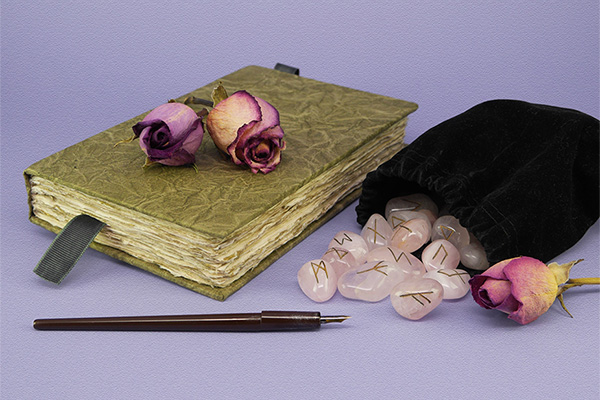ancient wisdom
The Robin Outside My Window
 Birdwatching has become a favorite pastime for me over the last year or two. This morning, I noticed a robin building a nest on one of the air conditioning units on a neighbor’s deck, directly opposite my window.
Birdwatching has become a favorite pastime for me over the last year or two. This morning, I noticed a robin building a nest on one of the air conditioning units on a neighbor’s deck, directly opposite my window.
I was overjoyed! We’ve had very dry weather here in my state since mid-spring, causing robins to struggle finding nesting materials.
Some years ago, I found a newborn chick on a sidewalk while out for a walk. I could not tell for sure what species of bird it was, but it looked like it might be an American robin. I found no nest nearby to put it back into and had no idea what to do with it, but take it home. Sadly, it did not survive.
Since then, I’ve had some ‘robin guilt’ and wished I could have done more to save it. I suspect this stems from another robin incident, when I was growing up. Back then I also tried to care for older fledglings that ultimately didn’t make it. Should I have let nature take its course, instead of trying to take things into my own hands?
Last fall, after the breeding season ended, I purchased some mealworms and placed them by the forested ridge at the end of the complex where I live. The hungry robins were very appreciative, especially after the first frost. It warmed my heart! I plan to continue helping the robins around my apartment complex as the drought continues.
The deeper truth is that robins always remind me of my father. The Latin name for the American robin is turdus migratorius, because it is a migratory songbird that is free-roaming and very sensitive to environmental conditions. However, because they are highly adaptable, their migratory habits tend to be sporadic, even random.
The Spiritual Foundation Of Self-Trust
 Do you have difficulty trusting yourself? If so, you are not alone. Clients frequently tell me they find it hard to trust themselves for various reasons. Fortunately, it is never too late to rediscover, recover and heal your divine, confident self.
Do you have difficulty trusting yourself? If so, you are not alone. Clients frequently tell me they find it hard to trust themselves for various reasons. Fortunately, it is never too late to rediscover, recover and heal your divine, confident self.
I struggled with self-doubt for many years, due to experiences that undermined the development of my sense of self in the formative years of my life. I have since dedicated decades to getting to the root of my self-doubt, and in time cultivated self-trust in its place.
My path to healing was intuitively guided by God, Source, Spirit, the Divine, every step of the way. Now sharing the wisdom and insights I have learned from my self-trust journey has become one of the prominent themes in my service to others.
The first major lesson I learned was the importance of becoming anchored in a spiritual conception of the self. I found this understanding in the teachings of two Hindu scriptures known as the Bhagavad Gita and Srimad-Bhagavatam. These ancient texts meticulously explore the eternal identity of the self and how to revitalize it is.
Our true self is the spirit soul present within our physical body. It is the spark of life force, the divine consciousness that animates both our body and mind. This spiritual spark emanates from the Supreme Personality of God and bears its own eternal, individual identity. Although the soul is an atomic particle of God’s energy, it is also a person – the real person who is the self.
We are not our body, mind, or intelligence. We are not the personas we project or identify as in this world. All of those are mere ‘coverings’ of our true soul essence, much like the clothes we wear to cover our body.
Inspire Your Journaling With The Runes
 Journaling is a powerful practice for self-discovery and personal growth. It allows one to reflect on your thoughts and emotions, gain clarity, and connect with your inner wisdom. Sometimes finding the necessary inspiration for a journal entry can however be difficult. A wonderful way to enhance your journaling practice is by incorporating runes. The runes are an ancient Germanic alphabet used for writing, divination, and magic. Each rune features a unique symbol representing different aspects of life and the natural world.
Journaling is a powerful practice for self-discovery and personal growth. It allows one to reflect on your thoughts and emotions, gain clarity, and connect with your inner wisdom. Sometimes finding the necessary inspiration for a journal entry can however be difficult. A wonderful way to enhance your journaling practice is by incorporating runes. The runes are an ancient Germanic alphabet used for writing, divination, and magic. Each rune features a unique symbol representing different aspects of life and the natural world.
The use of runes as a divination tool dates back to the Viking Age (793–1066 CE) and has been practiced by many cultures throughout history. Today, runes are often used as a tool for self-discovery, personal growth, and spiritual practice.
Using the runes to inspire journaling is a simple and effective way to take your spiritual practice to the next level. Here are some steps to get you started.
1. Choose a set of runes that resonates with you. You can order a rune set online, purchase it at your local metaphysical shop, or even make your own. Each set should include 24 runes, plus one blank rune that represents the unknown or unexpected.
2. Set an intention for your rune journaling practice. Before you begin, relax, take a few deep breaths, and then set a clear intention for what you wish to gain from today’s journaling session. It might be clarity, insight, healing, or guidance on a specific issue.
The Ancient Art Of Meditation In Motion
 I recently attended a Tai Chi class for the first time and absolutely loved it. I have seen this ancient martial art being practiced on television and in films before, and always thought I would like to experience it myself someday.
I recently attended a Tai Chi class for the first time and absolutely loved it. I have seen this ancient martial art being practiced on television and in films before, and always thought I would like to experience it myself someday.
Tai Chi is an ancient Chinese tradition involving slow movements and breathwork that is essentially meditation in graceful motion. At this recent event, I enjoyed it so much that I intend to continue pursuing this practice.
Our instructor at the event also explained the many health benefits of practicing Tai Chi, which further fueled my interest. This may include reduced stress, improved mood, mental health and cognitive function, enhanced immune function, increased cariovascular health, better sleep patterns, and even reduced risk of falling in mature adults.
One of the key advantages of Tai Chi is that it has no age limit. In fact, I was surprised at the various age groups in attendance that day. It is certainly a wonderful mind, body, and soul pursuit for everyone, because it is a gentle and slow-paced ‘internal’ martial art that does not involve any competition.
The exact history and origins of Tai Chi is unclear. Some scholars believe it originated from ancient Taoist and Buddhist monasteries, while others contend that Tai chi is a purely Chinese art that originates from the spiritual wisdom traditions of Daoism and Confucianism. There are many styles of Tai Chi that differ in execution and training methods.
The Ancient Magic Of The Runes
 The casting of runes is a fascinating divination practice dating back to the ancient Germanic and Scandinavian peoples. The rune symbols originally served as an alphabet for written communication in various Germanic languages until the Latin alphabet was later adopted.
The casting of runes is a fascinating divination practice dating back to the ancient Germanic and Scandinavian peoples. The rune symbols originally served as an alphabet for written communication in various Germanic languages until the Latin alphabet was later adopted.
But the runes retained their archetypal symbolism and time evolved into a powerful tool for divination, magic, and meditation. The origin of word ‘rune’ actually stems from the old Germanic word for ‘secret’ or ‘mystery.’ The modern mystique of the runes lies in how it connects us to the wisdom of the ancients.
The runes are a set of 24 symbols, each with its own unique symbolic meaning and energy signature. Traditionally it is made of natural materials, such as stone, wood, or bone. The most common use of runes is for divination purposes, where the symbols are cast, or drawn, and then interpreted to gain insight into a particular situation or question.
Like other divination tools, the runes offer a gateway to tapping into the collective unconscious. These symbols have been used for centuries by countless people, each leaving their own energy imprint on the universal interpretation of each. When we work with the runes, we therefore tap into the collective wisdom it represents and gain access to a deeper understanding of ourselves and the world around us.
A charming aspect of the runes is their connection to nature. Many of these ancient symbols were derived from natural elements, such as trees, animals, and weather patterns. By engaging with the runes, we also connect with the natural world and its rhythms, which empowers us with greater balance and harmony in our lives and aligns us with the flow of the universe.
The Sacred Tradition Of Smoke Cleansing
 Smoke cleansing is an ancient spiritual practice found in many faiths, cultures, and wisdom traditions all over the world. These age-old rituals, ceremonies and healing practices involve the burning of various aromatic plants, resins, and woods and have been practiced since humans first discovered fire. Traditionally ceremonies and rituals involving smoke are mostly used for energy cleansings and spiritual blessings, but the purposes, techniques and materials used vary widely among belief systems, tribes, nations, and cultures.
Smoke cleansing is an ancient spiritual practice found in many faiths, cultures, and wisdom traditions all over the world. These age-old rituals, ceremonies and healing practices involve the burning of various aromatic plants, resins, and woods and have been practiced since humans first discovered fire. Traditionally ceremonies and rituals involving smoke are mostly used for energy cleansings and spiritual blessings, but the purposes, techniques and materials used vary widely among belief systems, tribes, nations, and cultures.
The burning of incense, for example, was a revered practice in ancient Egypt as part of religious ceremonies. This practice continues today in the Roman Catholic church, with the burning of incense to amplify prayers and intentions.
In both Hinduism and Buddhism, incense is burnt for ritual offerings and rites, while in ancient China incense was burned during festivals and processions to honor ancestors and household gods, and in Japan it is part of the Shintō purification ritual.
In ancient Rome cinnamon was burnt during funerals. The Assyrians burned various aromatic woods in their homes, temples, and places of healing. In traditional Chinese medicine, the burning of agarwood and sandalwood is done to promote emotional wellness and physical healing.
One of the most well-known smoke cleansing traditions, especially in the United States, is known as smudging. To ‘smudge’ means ‘to make a smoky fire’ or ‘to emit a dense smoke.’ Smudging involves various purification and healing ceremonies originally practiced by the indigenous peoples of the Americas. Certain sacred herbs are traditionally used in smudging to purify and bless people and places, of which the most commonly used today is white sage or salvia apiana, also known as bee sage or sacred sage. It is an evergreen perennial shrub native to the southwestern United States and northwestern Mexico.
